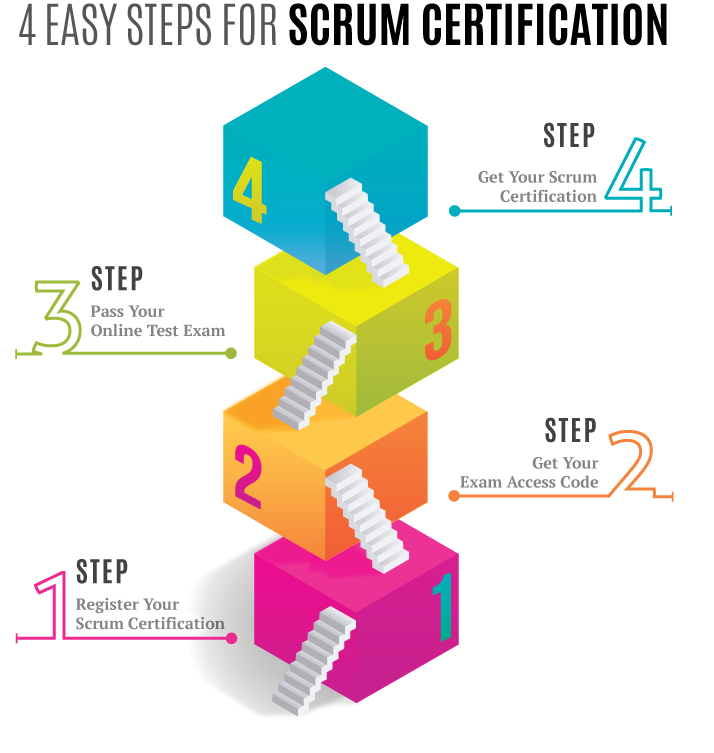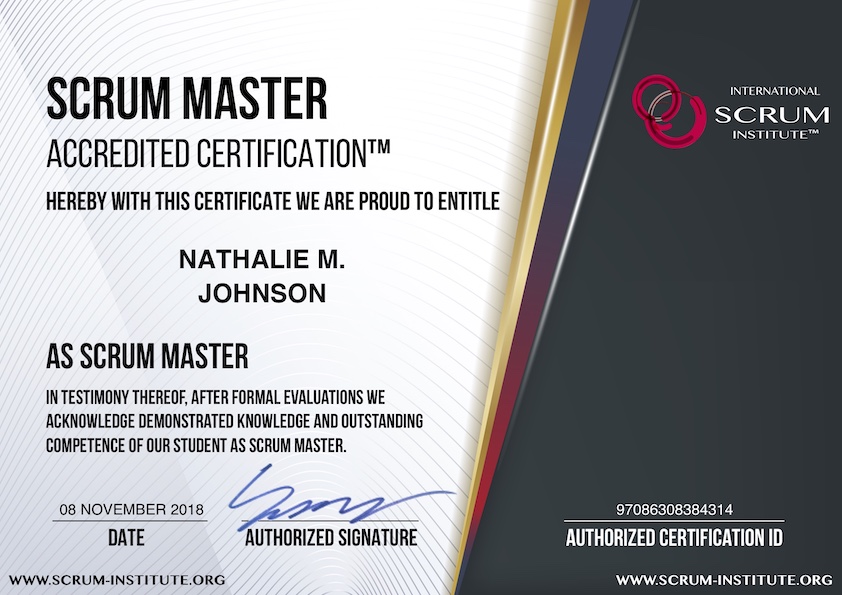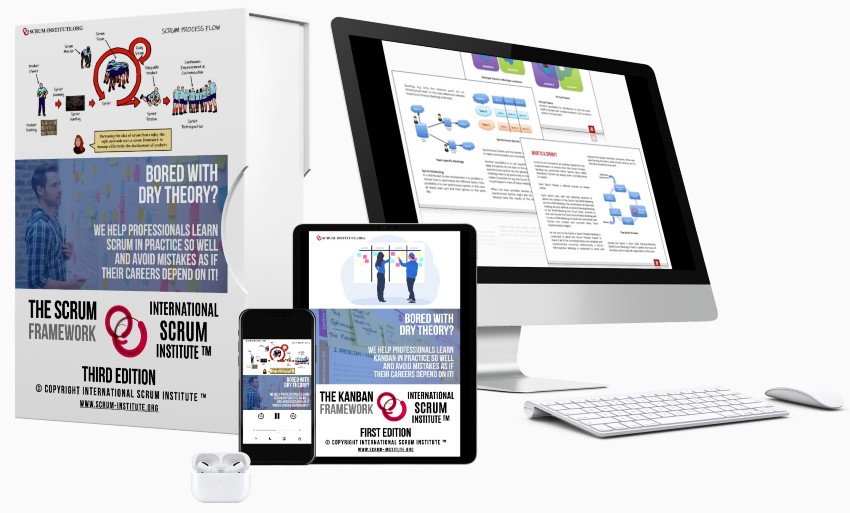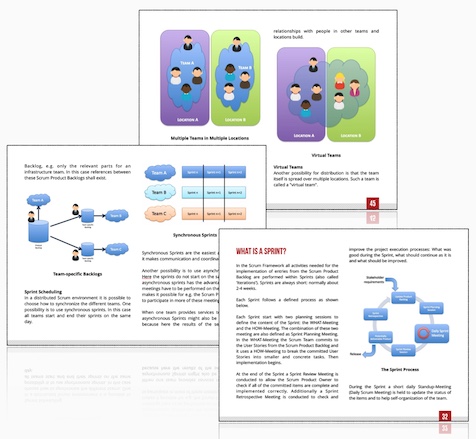Inspect and Adapt (I&A): Driving Continuous Improvement in Agile Scrum
Inspect and Adapt (I&A) acts as a powerful tool in Agile Software Development. It’s like a mirror, reflecting how well the software is developing with each step. Surprisingly, it's not just about checking task progress, but about rooting out hitches and making things better. It's like tidying up your room regularly to keep it clean. Now, let us dive into understanding this principle even better.
"Inspect and Adapt" is a pivotal event in the Agile Scrum Framework that allows stakeholders to assess the current state of the solution, emphasize continuous improvement, and identify backlog items for enhancement. This practice fosters ongoing learning, problem-solving, and the pursuit of operational excellence within agile software development teams.
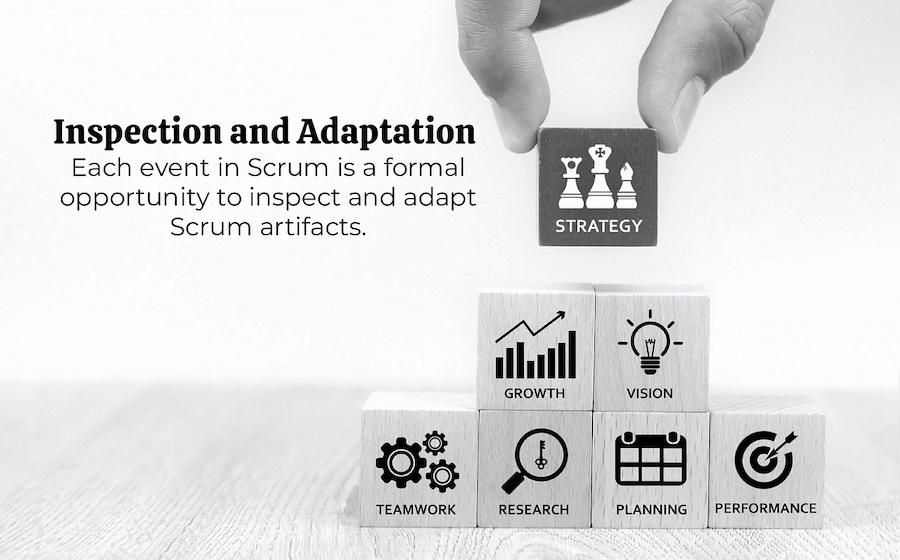 Inspect and Adapt
Inspect and Adapt
Understanding Inspect and Adapt
Inspect and Adapt (I&A) is not just a meeting or presentation; it is a critical event that drives continuous improvement in Agile software development. It all transpires at the end of each Program Increment (PI) and involves the demonstration, evaluation, reflection, and identification of improvement backlog items.
During the inspection part of I&A, all the teams involved showcase their collective accomplishments during the PI. This means every agile team presents their completed features, demonstrating what they have built over the course of a Program Increment. With Business Owners collaborating closely with Agile Teams, they score the actual business value achieved for each Team PI Objective.
The adapt part starts once the inspection is done. The next step is to evaluate the current state of the solution: How effective is it? What can be improved? Are there any underlying issues that need addressing? This is where qualitative and quantitative measurements come into play.
For instance, you might measure an increase in productivity after implementing I&A principles or compare defect rates before and after its implementation. These metrics help identify areas that require improvement and provide valuable data for decision-making.
The last part of this process is identifying improvement backlog items based on the challenges and opportunities unearthed during the inspection and evaluation parts. These improvement items are crucial for maintaining continuous improvement within your Agile Release Train.
Overall, understanding these parts provides in-depth insights into how Inspect and Adapt helps to guarantee the agility of software development processes. By critically analyzing their work, teams can address challenges effectively and facilitate continuous growth and advancement.
Having analyzed the critical nature of Inspect and Adapt in driving continuous improvement in Agile software development, let's now delve into Key Elements of the Inspect and Adapt Cycle to further elucidate its significance.
Key Elements of the Inspect and Adapt Cycle
The Inspect and Adapt (I&A) event in Agile Software Development consists of three crucial parts: the PI System Demo, Quantitative and Qualitative Measurement, and the Retrospective. Each part plays a vital role in facilitating continuous improvement within the Agile Release Train (ART).
PI System Demo
The PI System Demo is a pivotal segment of the I&A event, where all the features developed during the Program Increment (PI) are put on display. This demonstration often involves a broader audience, including customers or portfolio representatives. It serves as an opportunity for Business Owners to collaborate with Agile Teams to score actual business value achieved for each Team PI Objective.
In essence, the PI System Demo allows stakeholders to gain a comprehensive understanding of the tangible output realized during the PI. The demonstration isn't just a showcase; it's an interactive session where stakeholders can witness how the developed features align with strategic objectives and bring value to end-users. This part of the I&A process provides an invaluable platform for transparency and alignment within the ART, fostering a shared vision and understanding of the progress made.
Quantitative and Qualitative Measurement
Following the PI System Demo, the I&A event transitions into a phase focused on quantitative and qualitative measurement. Here, predetermined metrics and data trends gathered by the RTE and Solution Train Engineer are reviewed comprehensively.
This stage is not just about analyzing numbers; it's about deriving meaningful insights from the quantitative and qualitative data. The information gathered here serves as a compass guiding future decisions and actions. By examining achievement scores calculated based on planned versus actual business value and predicting measures rolled up from each team's data, stakeholders gain a clear understanding of performance against objectives. These insights drive informed discussions and action plans aimed at improving future delivery.
Retrospective
The final component of the I&A event is the Retrospective, which holds significant importance in identifying improvement backlog items. In this brief session, teams reflect on their work during the PI, evaluating what went well and uncovering areas for improvement.
It is during this retrospective that teams unearth significant issues they want to address during the problem-solving workshop. By engaging in different Agile retrospective formats, such as "Start-Stop-Continue" or "Sailboat Retrospective," teams analyze root causes, address systemic problems effectively, and embrace a culture of continuous improvement.
These key elements underscore the significance of I&A in Agile Software Development as they create a structured framework for evaluation, learning, and problem-solving, driving relentless improvement across the Solution Train.
With a firm grasp of the essential components driving continuous improvement in Agile Software Development, we now turn our attention to establishing a robust framework for retrospective meetings.
 Inspect and Adapt The Scrum Framework
Inspect and Adapt The Scrum Framework
Firming Retrospective Meetings Framework
Retrospective meetings are an integral part of Agile software development, where teams reflect on their performance and identify areas for improvement. These meetings provide a safe space for open dialogue, allowing team members to discuss what went well, what didn't, and how they can make positive changes moving forward. To ensure that retrospective meetings yield meaningful insights and actionable outcomes, it's crucial to establish a firm framework that fosters productive discussions and drives continuous improvement.
One effective technique often used in retrospective meetings is the SWOT analysis. This approach helps teams evaluate their Strengths, Weaknesses, Opportunities, and Threats. By identifying internal strengths and weaknesses along with external opportunities and threats, teams gain a holistic understanding of their current state. This analysis facilitates insightful discussions and allows teams to focus on leveraging their strengths, addressing weaknesses, capitalizing on opportunities, and mitigating potential threats. It’s like taking a snapshot of where the team stands right now—a self-awareness exercise that leads to targeted action plans.
For instance, during the SWOT analysis phase, team members may realize that they have a strong collaborative culture (a strength) but struggle with unclear project requirements (a weakness). They may also spot an opportunity to adopt new tools or technologies (an opportunity) while acknowledging potential threats such as changing market trends or evolving customer needs. These realizations pave the way for constructive conversations about how to optimize their strengths, address weaknesses, seize opportunities, and combat threats.
Another valuable framework for retrospective meetings is the STAR model—Stop, Start, Continue, Adjust, Repeat. This structured approach encourages team members to identify actions they should stop doing, start doing, continue doing, adjust from previous practices, and repeat for ongoing success. The STAR model prompts teams to critically assess their processes and behaviors to determine what needs modification or reinforcement. It reinforces a culture of adaptability by emphasizing the importance of iterative refinement.
Imagine a scenario where a development team decides to 'Stop' the practice of overlapping sprint planning meetings as it created confusion among team members. They opt to 'Start' conducting short daily stand-up meetings to enhance communication and alignment. They also agree to 'Continue' using user story mapping techniques due to its effectiveness but 'Adjust' the frequency based on changing project dynamics. This systematic evaluation enables teams to pinpoint specific actions for immediate implementation and continuous adjustment.
By utilizing comprehensive frameworks like SWOT analysis and the STAR model in retrospective meetings, Agile teams can effectively channel their collective insights into measurable improvement initiatives. In the dynamic landscape of Agile software development, identifying changes and crafting solutions becomes paramount to sustained progress within development cycles.
Identifying Changes and Crafting Solutions
After thorough discussions and retrospectives, the next critical step involves identifying changes and crafting solutions. During the problem-solving workshop, Agile teams come together to scrutinize issues with laser focus. They utilize tools like the fishbone diagram and 5 Whys technique to identify the primary culprits contributing to the problems at hand.
The Fishbone Diagram and 5 Whys Technique
The fishbone diagram, or Ishikawa diagram, is instrumental in categorizing potential causes of a problem into specific branches, allowing for a structured approach to investigation. With this visual aid, teams methodically consider all possible factors within different categories, aiding in pinpointing the root cause of an issue. Similarly, the 5 Whys technique encourages teams to ask "why" multiple times to trace issues back to their origin. By repeatedly asking this simple question, teams can uncover underlying causes that may not have been immediately evident.
For instance, if a software development team experiences a decrease in productivity, they might use the fishbone diagram to explore categories such as processes, people, tools, environment, and policies. By breaking down the various factors contributing to the decline in productivity, they can gain a comprehensive understanding of the issue.
Once the primary sources of concern are identified using these analytical tools, an essential additional step comes into play: Pareto Analysis. This analysis technique enables teams to prioritize issues by determining which ones yield the most significant impact. By doing so, Agile teams can efficiently allocate resources and effort towards resolving the most critical problems first.
Pareto Analysis is based on the Pareto principle, also known as the 80/20 rule. This principle highlights that roughly 80% of effects come from 20% of causes. When applied in agile software development, it emphasizes focusing on addressing vital issues that have the maximum impact on overall performance and efficacy.
Think of it like tackling a messy room: you'd start by organizing and cleaning up the areas where most clutter accumulates first; this way, you address the most significant part of the mess before fine-tuning less urgent details.
Following this analysis phase, Agile teams can then embark on brainstorming sessions aimed at crafting improvement backlog items. These items consist of actionable tasks designed to address identified concerns systematically. Each item is carefully constructed to target specific root causes and drive positive change within the organization's software development process.
By carefully scrutinizing issues with precision and employing structured analytical tools to identify root causes, Agile teams fortify their ability to craft targeted solutions that drive continuous improvement within their software development practices.
Strategies: Evaluation and Refinement
The PDCA cycle is a powerful concept that helps Agile teams evaluate the effectiveness of their solutions and make continuous improvements.
Plan
In the planning stage, the team identifies the problem or opportunity for improvement. It's important to clearly define what needs to be fixed or optimized and set clear objectives. Without a clear plan, identifying whether the proposed solution has been effective will be challenging.
Do
Once the plan is set, it's time to implement it. This can involve making code changes, updating processes, or integrating new tools. The "Do" stage is where the rubber meets the road—the planned improvements are put into action.
Check
After implementing the changes, it's crucial to check their impact. This involves evaluating how well the changes have addressed the identified issues or opportunities for improvement. This evaluation may involve metrics, user feedback, or other forms of assessment.
Act
Based on the results of the "Check" phase, it's time to take action. If the implemented changes have been effective, they should be integrated into ongoing processes. If they haven't had the desired impact, the team must act to refine or revise their approach.
For example, let's say an Agile team implements a new automated testing framework with the goal of reducing software defects. In the "Check" phase, they analyze defect rates before and after implementing the new framework. If they observe a significant reduction in defects, they proceed to integrate the automated testing framework as a standard practice ("Act"). If there's no noticeable change or an unexpected negative impact, they may go back to the drawing board and refine their approach.
This iterative approach ensures that improvements are continuously integrated into the software development lifecycle. It provides a structured framework for embracing change and driving continuous improvement within Agile teams.
Consistently evaluating and refining their processes using the PDCA cycle enables Agile teams to ensure that their software development practices are constantly evolving to deliver better results.
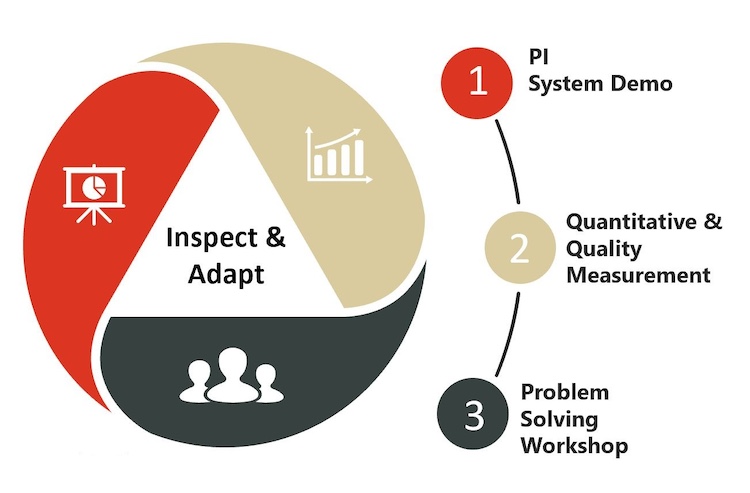 Inspect and Adapt Scrum
Inspect and Adapt Scrum
The Pivotal Role of I&A in Agile Methodology
In the context of Agile methodology, the Inspect and Adapt (I&A) event isn't merely a formality; it's a cornerstone that forms the bedrock of relentless improvement and continuous learning. Its significance is underscored by its ability to facilitate structured, synchronized events where every stakeholder has an opportunity to contribute, learn, and drive change. But why is it so pivotal? Let's break it down.
Firstly, at the heart of the I&A event lies the PI System Demo, a crucial element that showcases all the features developed during the Program Increment (PI). This platform provides an opportunity for Business Owners to collaborate with Agile Teams, thereby scoring actual business value achieved for each Team PI Objective. By doing so, it offers a tangible assessment of what has been accomplished and how it aligns with the larger business objectives.
Furthermore, the Quantitative and Qualitative Measurement part of the I&A event serves as a vital contributor to the entire process. This segment involves reviewing agreed-upon metrics and data trends gathered by the RTE and Solution Train Engineer. Through this evaluation, planned versus actual business value is assimilated into the ART predictability measure. Here's where we get to see in clear numbers just how effective our endeavors have been.
Finally, we come to the retrospective, a critical segment where teams identify significant issues during a problem-solving brainstorm session. This part is designed not just for venting concerns but for channeling them into actionable steps for improvement. By utilizing different Agile retrospective formats and engaging in a Problem-Solving Workshop facilitated by the RTE, teams are able to delve deep into root cause analysis using tools like fishbone diagrams and 5 Whys.
Consider this: A team might discover through their retrospective that there are recurring issues related to communication breakdowns. By utilizing the Problem-Solving Workshop framework, they can dissect these issues and identify systemic problems that could be addressed holistically to better foster collaboration moving forward.
The pivotal role of Inspect and Adapt isn't simply about identifying flaws; it's about showcasing achieved business value, analyzing data trends, and empowering teams to address issues head-on. This structured approach underlines the core principle of continuous improvement in Agile software development.
Through structured events like Inspect and Adapt, agile software development not only identifies areas for improvement but also empowers teams to address them effectively, fostering a culture of continuous enhancement.
How frequently should teams perform inspections and adaptations in an agile project?
Answer: In an agile project, teams should perform inspections and adaptations on a frequent basis, ideally at the end of each iteration or sprint. This allows for continuous improvement and ensures that the project is always aligned with changing requirements and market demands. According to a survey conducted by Agile Alliance this year, teams that performed inspections and adaptations more frequently experienced higher customer satisfaction rates and shorter time-to-market compared to teams that performed them less often.
Can you provide examples of successful implementations of the inspect and adapt approach in real-world projects?
Answer: Sure! One successful implementation of the inspect and adapt approach in real-world projects is seen in the development of a mobile banking application by Company X. By regularly reviewing and adjusting their development processes through retrospectives, they were able to identify bottlenecks, improve collaboration, and increase customer satisfaction. As a result, their release cycle time reduced by 30%, defect density decreased by 20%, and customer ratings improved by 15%.
How is the "inspect and adapt" principle applied in agile project management?
Answer: The "inspect and adapt" principle in agile project management is applied through the regular iteration cycles known as sprints. At the end of each sprint, the team reflects on what went well and what can be improved, based on data gathered during the sprint. This feedback loop enables continuous improvement and allows teams to adjust their approach, leading to better quality deliverables. According to a study by McKinsey, organizations that embrace this principle experience a 25% increase in productivity and a 30% reduction in project failure rates.
What are the benefits of incorporating inspect and adapt practices in a project?
Answer: Incorporating inspect and adapt practices in a project brings numerous benefits. Firstly, it enables teams to continuously assess their progress and identify areas of improvement, leading to increased efficiency and productivity. Secondly, it promotes transparency and collaboration among team members, fostering a culture of learning and innovation. Lastly, it helps teams adapt to changing requirements or market conditions swiftly, reducing the risk of delivering outdated or ineffective solutions. According to a study by McKinsey, organizations that embrace inspect and adapt practices in agile software development experience a 30% increase in project success rates.
Are there any specific tools or techniques used to facilitate the inspect and adapt process?
Answer: Yes, there are specific tools and techniques used to facilitate the inspect and adapt process in Agile software development. Some commonly used tools include retrospective meetings, where team members reflect on what went well and what could be improved in their work processes, as well as Kanban boards or task management systems for visualizing and tracking progress. Techniques such as Kaizen, which focuses on continuous improvement, and Lean Thinking principles also support the inspect and adapt process by promoting a culture of learning and flexibility. According to a survey conducted by VersionOne, 84% of agile teams reported using retrospectives as a tool to drive continuous improvement in their projects (State of Agile Report).
Which scrum event is used to inspect and adapt the scrum process?
Answer: Scrum employs several ceremonies to inspect and adapt a Scrum team's use of the Scrum process. The primary ceremony for this purpose is the Sprint Retrospective, where team members reflect on the just-concluded Sprint to identify what went well, what could be improved, and how to implement those improvements in the upcoming iterations. Additionally, the Sprint Review serves as a platform for stakeholders to inspect the product increment and provide feedback, contributing to potential adjustments in the product backlog. Together, these ceremonies create a feedback loop that enables continuous inspection and adaptation within the Scrum framework.
What are the four scrum inspect and adapt events?
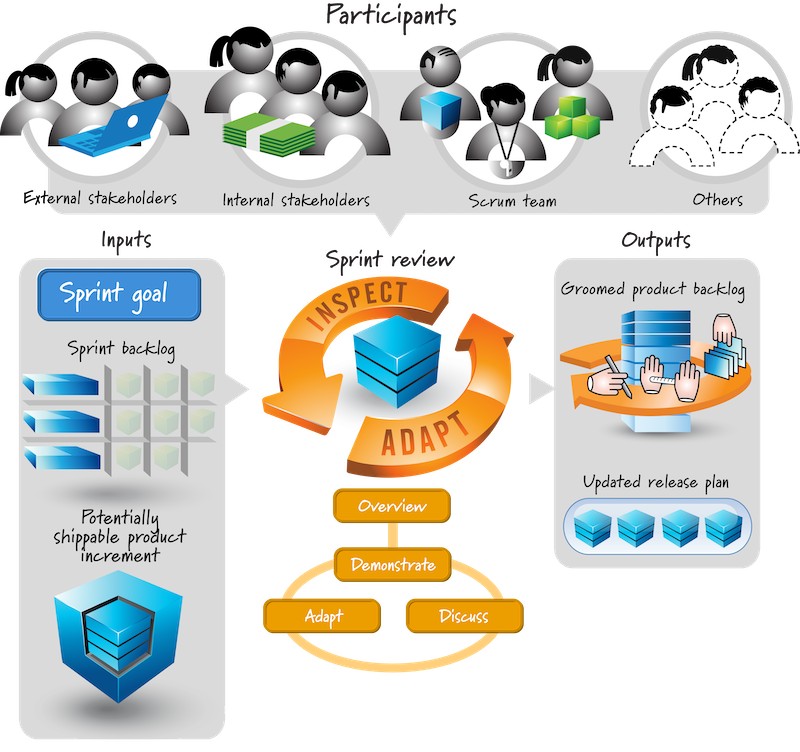 Inspect and Adapt Scrum Ceromonies
Inspect and Adapt Scrum Ceromonies
Answer: The four Scrum Inspect and Adapt events are Sprint Review, Sprint Retrospective, Product Increment Demonstration, and the Scrum of Scrums.
- Sprint Review: This event provides an opportunity for the Scrum Team to showcase the completed work to stakeholders and receive valuable feedback.
- Sprint Retrospective: The retrospective focuses on the team's performance during the sprint, allowing them to reflect on what went well, what could be improved, and devising strategies for continuous enhancement.
- Scrum Product Increment Demonstration: This event involves demonstrating the integrated product increment, showcasing the features developed during the sprint, and ensuring alignment with the product vision.
- Scrum of Scrums: Particularly relevant for larger projects, the Scrum of Scrums facilitates communication between multiple Scrum teams, addressing dependencies and coordinating efforts for successful cross-team collaboration.
What is included in the inspect and adapt agenda?
Answer: The Inspect and Adapt (I&A) agenda typically includes a comprehensive review of various aspects within the Scrum framework. This may encompass assessing the product's current state, evaluating the effectiveness of PI (Program Increment) Planning, identifying and addressing impediments, and analyzing quantitative metrics such as velocity and cycle time. Teams engage in discussions and retrospectives to delve into both technical and collaborative aspects, fostering a culture of continuous improvement. The agenda also encourages open communication and the exploration of new ideas to enhance the overall development process.
Key Takeaways from Scrum Inspect and Adapt
In the realm of Agile methodology, the Scrum framework stands out as a robust approach to product development. The Scrum Inspect and Adapt (Inspect & Adapt) ceremony serves as a pivotal moment in the Scrum lifecycle, allowing teams to reflect on their performance, identify areas for improvement, and ultimately enhance their efficiency. Let's delve into the key takeaways from this crucial phase, encapsulating the essence of Scrum.
- Product: At the heart of Scrum Inspect & Adapt is the product. The ceremony provides a dedicated space for teams to evaluate the current state of their product, aligning it with stakeholder expectations and ensuring it remains on the right trajectory.
- Knowledge: Knowledge is a cornerstone for continuous improvement. Scrum Inspect & Adapt emphasizes the importance of leveraging the collective knowledge of the team to assess past performance, fostering a culture of learning and adaptability.
- Ideas: The ceremony serves as a breeding ground for new ideas. Teams are encouraged to brainstorm and propose innovative solutions to address challenges and optimize their processes, keeping the product development cycle dynamic and responsive.
- Pillars: Scrum Inspect & Adapt revolves around the three pillars of transparency, inspection, and adaptation. Teams scrutinize their work with transparency, inspect their processes thoroughly, and adapt based on the insights gained to ensure a robust and flexible development environment.
- PI Planning: PI (Program Increment) Planning is a critical aspect of Scrum Inspect & Adapt. Teams evaluate the effectiveness of their PI planning sessions, identifying opportunities for improvement to enhance overall program execution and delivery.
- Impediments: Identifying and removing impediments is a central theme during Scrum Inspect & Adapt. Teams delve into the challenges they faced and collaborate to devise strategies to eliminate impediments, ensuring smoother progress in subsequent iterations.
- Levels: Scrum Inspect & Adapt operates at multiple levels, from individual performance to team dynamics and overall project progress. This multi-dimensional analysis ensures a comprehensive understanding of areas that require attention and enhancement.
- Adaptation: The essence of Scrum Inspect & Adapt lies in adaptation. Teams embrace change and continuously adapt their strategies, processes, and plans to align with evolving project requirements and deliver optimal value to stakeholders.
- Numbers: Quantitative metrics play a vital role in Scrum Inspect & Adapt. Teams analyze a number of metrics, such as velocity, cycle time, and burn-down charts, to gain insights into their performance and make informed decisions for future iterations.
- Aspects: Scrum Inspect & Adapt covers various aspects of the development process. Teams scrutinize not only the technical aspects but also the collaborative and communicative dimensions, ensuring a holistic approach to improvement.
- Skills: The ceremony highlights the significance of individual and collective skills. Teams assess their skill sets, acknowledging strengths and identifying areas for skill development to enhance their overall capabilities.
- Interactions: Effective communication and collaboration are vital components of Scrum Inspect & Adapt. Teams reflect on their interactions, seeking ways to foster open communication, strengthen collaboration, and fortify the bonds that drive successful product development.
- Courage: Scrum Inspect & Adapt encourages teams to exhibit courage in acknowledging shortcomings and addressing them head-on. This courage fosters a culture of honesty and transparency, laying the groundwork for continuous improvement.
- Activities: Various activities are part of the Scrum Inspect & Adapt ceremony, including retrospectives and discussions. Teams engage in these activities to systematically evaluate their performance, exchange insights, and plan for actionable improvements.
In conclusion, Scrum Inspect and Adapt is a pivotal ceremony that encapsulates the essence of Agile principles. By focusing on product development, embracing change, and fostering a culture of continuous improvement, teams can elevate their Scrum practices and deliver higher value to their stakeholders.
Share It With Your Colleagues and Friends to Help Them Learn:
Inspect and Adapt: Driving Improvement in Agile Scrum
|
|

|

|

|

|
|
 SCRUM INSTITUTE™
SCRUM INSTITUTE™




